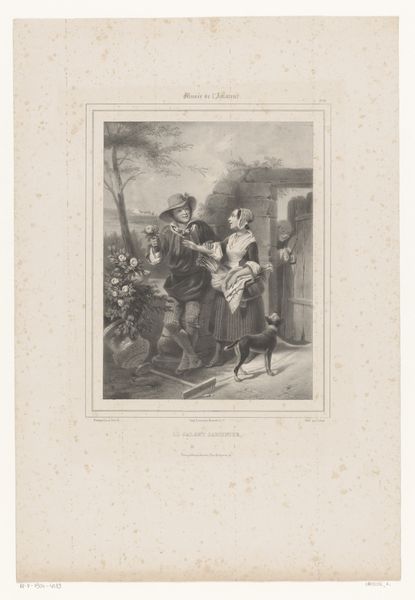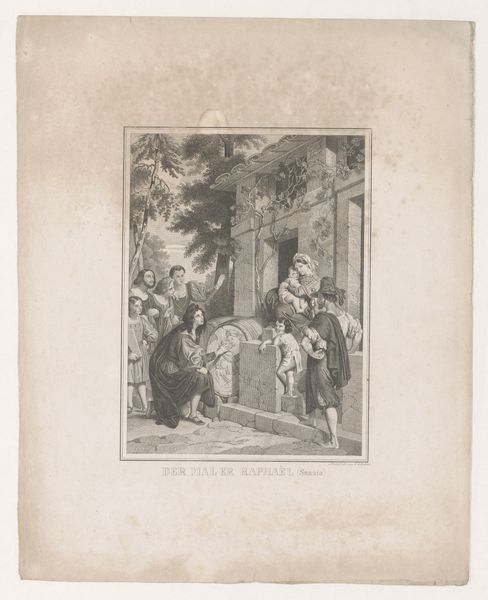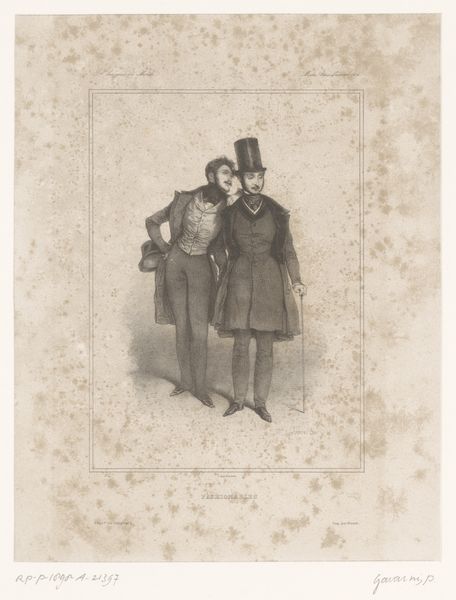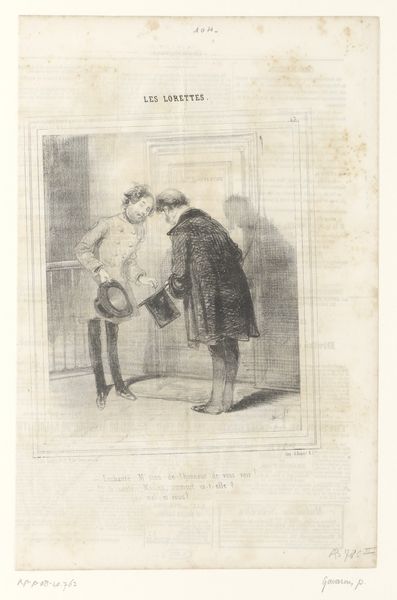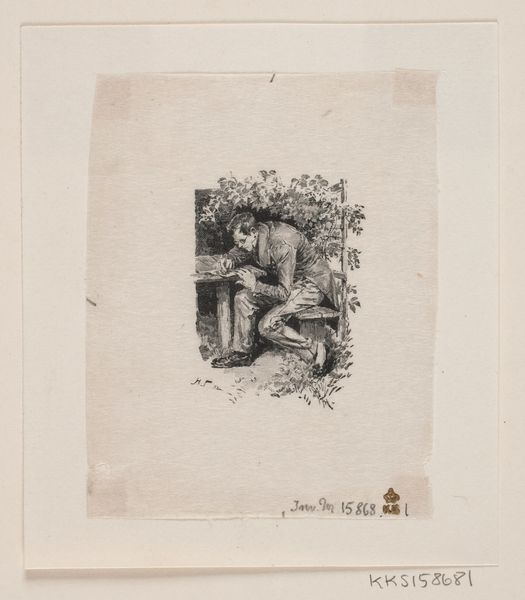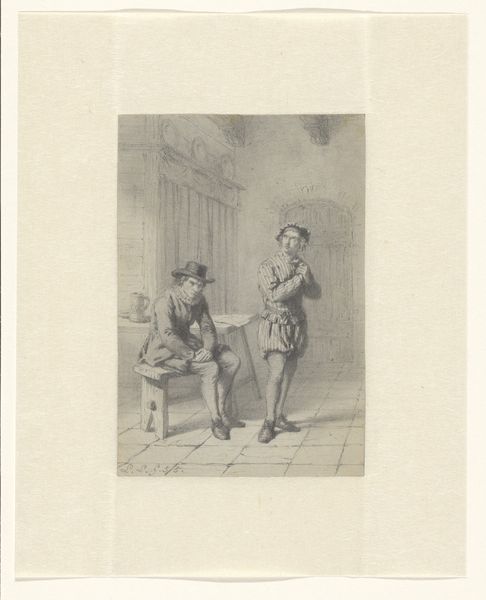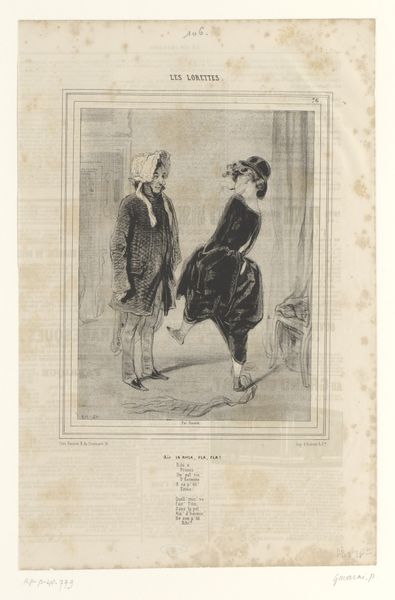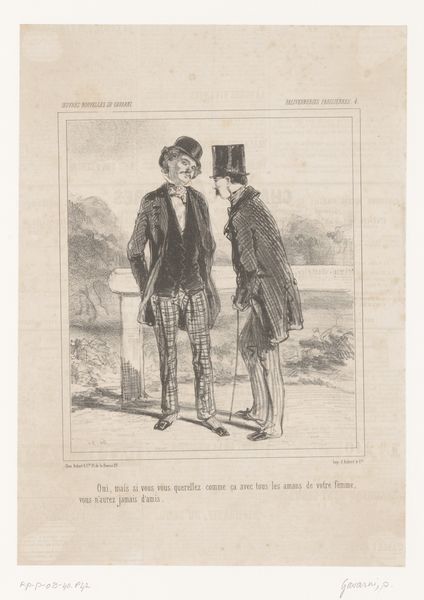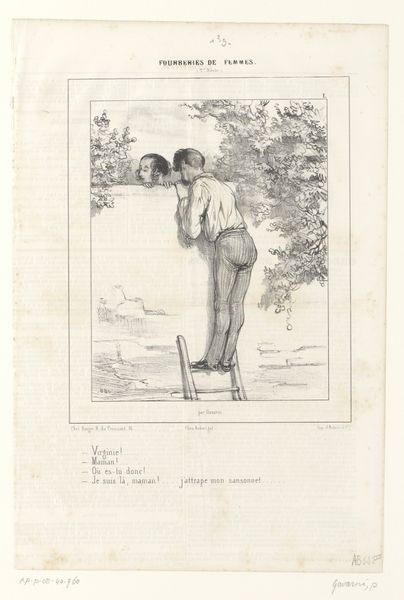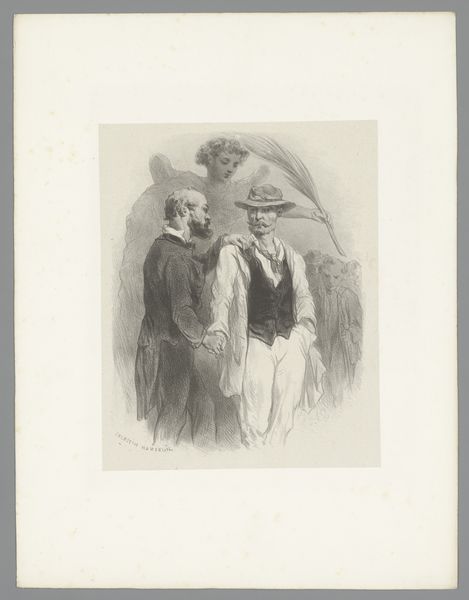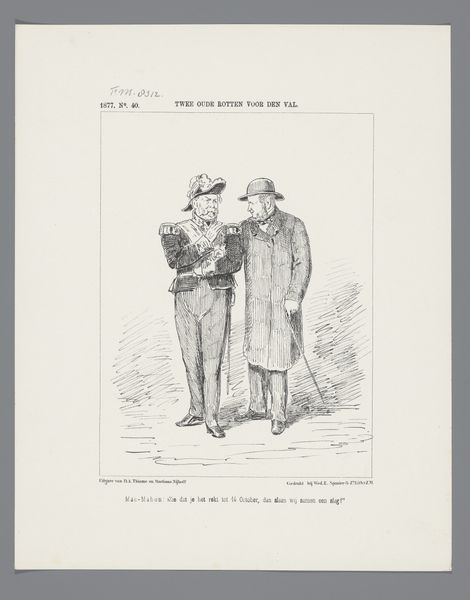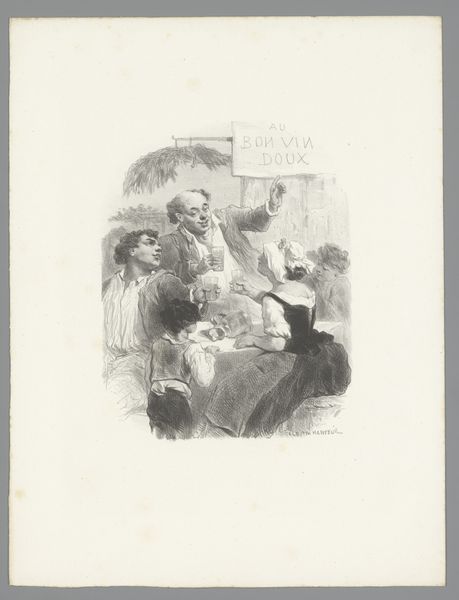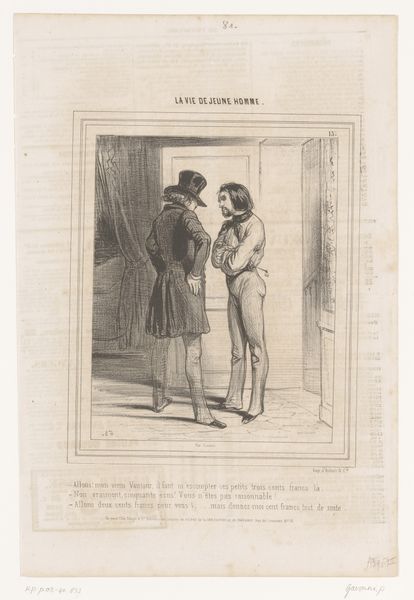
Dimensions: height 206 mm, width 137 mm
Copyright: Rijks Museum: Open Domain
This etching by Léon Le Bègue shows a woman offering cherries to a man, likely made in the early 20th century. The artist has used a technique called etching, an intaglio printmaking process in which a metal plate is covered with a waxy ground. The artist scratches an image into the ground, which is then bathed in acid. The acid bites into the exposed metal, creating recessed lines that hold ink. Le Bègue has managed to achieve a finely-wrought image that has light and shadow, capturing the intimate moment between the two figures with their loose clothing and the trees surrounding them. Note the texture of the woman's dress and the man's blazer, achieved through cross-hatching and varied line weights. The etching process itself is labor-intensive, involving multiple stages of preparation, etching, and printing. This emphasis on skilled handwork connects the print to a broader tradition of craft and making, reminding us that even seemingly mass-produced images have a unique origin in the artist's studio. It's a reminder to look closely at the materiality and making of all artworks.
Comments
No comments
Be the first to comment and join the conversation on the ultimate creative platform.
